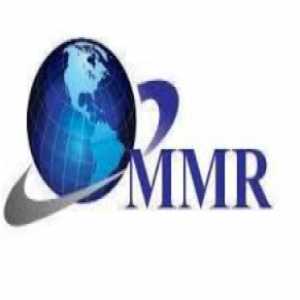
Astaxanthin Market: Trends, Benefits, And Growth Prospects

Introduction
The astaxanthin market is witnessing rapid growth due to increasing awareness of its health benefits, antioxidant properties, and applications in dietary supplements, cosmetics, and aquaculture. Astaxanthin, a naturally occurring carotenoid found in microalgae, seafood, and certain fungi, is known for its strong antioxidant capabilities, making it a sought-after ingredient in the nutraceutical, pharmaceutical, and personal care industries.
With the rise in consumer demand for natural health supplements, skincare solutions, and functional foods, the global astaxanthin market is expected to expand significantly in the coming years. This blog explores the market trends, key growth drivers, challenges, and future outlook of the astaxanthin industry.
Market Overview
Astaxanthin is primarily derived from natural sources such as Haematococcus pluvialis microalgae and krill, or it can be synthetically produced. It is widely used for its anti-inflammatory, anti-aging, and immune-boosting properties, with applications in healthcare, aquaculture, animal feed, and food & beverage industries.
Key Market Segments
- By Source:
- Natural Astaxanthin(Derived from algae, krill, and yeast)
- Synthetic Astaxanthin(Lab-produced for commercial applications)
- By Application:
- Dietary Supplements– Used for heart health, skin care, and immune support.
- Cosmetics & Personal Care– Anti-aging and UV-protection formulations.
- Food & Beverages– Functional foods, energy drinks, and fortified dairy products.
- Aquaculture & Animal Feed– Enhances pigmentation in salmon, shrimp, and poultry.
- Pharmaceuticals– Used in eye health, neuroprotection, and joint health supplements.
- By Region:
- North America
- Europe
- Asia-Pacific
- Middle East & Africa
- Latin America
Market Drivers
- Rising Demand for Natural Antioxidants in Health & Wellness
Astaxanthin is recognized as one of the most powerful antioxidants, supporting anti-aging, cardiovascular health, brain function, and muscle recovery, driving its popularity in the nutraceutical and dietary supplement sectors.
- Expanding Use in Cosmetics & Skincare
With growing demand for natural beauty products, astaxanthin is being incorporated into anti-aging creams, sunscreens, and skin-repair formulations due to its UV protection and skin-rejuvenating properties.
- Growth of the Aquaculture Industry
Astaxanthin is a key ingredient in fish and shrimp feed, enhancing pigmentation and improving growth rates and immune function in aquaculture, particularly in the salmon farming industry.
- Increasing Consumer Awareness of Sustainable & Plant-Based Nutrition
With the shift towards plant-based diets and natural health supplements, consumers are seeking organic and non-GMO astaxanthin products, boosting demand for microalgae-derived astaxanthin.
- Expanding Pharmaceutical Applications
Research has linked astaxanthin to eye health, joint support, neuroprotection, and cardiovascular benefits, increasing its use in pharmaceutical formulations and medical research.
Market Challenges
- High Production Costs for Natural Astaxanthin
Cultivating Haematococcus pluvialis microalgae for natural astaxanthin is costly, making synthetic alternatives more affordable, but less preferred due to lower bioavailability and consumer demand for natural sources.
- Regulatory Challenges & Quality Standards
Strict regulations on food supplements and pharmaceutical ingredients can impact market growth, with variations in approval processes across different regions.
- Limited Awareness in Emerging Markets
While astaxanthin is gaining popularity in North America, Europe, and Japan, awareness and accessibility remain limited in developing regions, slowing adoption.
Future Outlook
The astaxanthin market is set to grow significantly with innovations in production technology, sustainable sourcing, and expanding health applications. Key future trends include:
- Advancements in Algae Cultivation – Investments in photobioreactor technology and sustainable microalgae farming for higher-yield astaxanthin production.
- Increased Adoption in Sports Nutrition – Rising demand for natural recovery supplements and endurance-boosting products.
- Expansion in Vegan & Plant-Based Nutrition – Development of vegan-friendly astaxanthin supplements for health-conscious consumers.
- Integration into Functional Foods & Beverages – More fortified dairy products, juices, and energy drinks containing astaxanthin.
- Medical Research & Pharmaceutical Innovations – Ongoing studies on cognitive health, anti-cancer properties, and metabolic health are expected to open new markets.
Conclusion
The astaxanthin market is expanding rapidly, driven by growing consumer demand for natural health supplements, sustainable skincare solutions, and functional nutrition. With its powerful antioxidant properties and diverse applications, astaxanthin is poised to become a key ingredient in the future of wellness, beauty, and nutrition.
Companies investing in eco-friendly production methods, scientific research, and innovative product formulations will lead the market, ensuring high-quality and sustainable astaxanthin solutions for consumers worldwide.
Author Bio
Article Comments
No Comments!
At present there are zero comments on this article.
Why not be the first to make a comment?
Similar Articles
Search Pages
User Upgrade
account to full use of editor,
Including hyperlinks
Article Categories
There are zero sub-categories in this parent category.
There are zero sub-categories in this parent category.

















